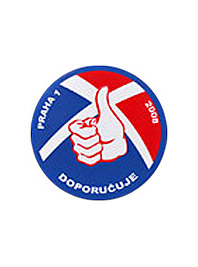SHOES 11.4.2012
Before cleaning or conditioning shoes, make sure you have the right products. Identify the material you are working with (located on the tag inside the shoe, sometimes under the tongue) before attempting to clean. If you're not sure, take the shoes to a professional.
General tips for all shoes
When using shoe cleaners and polishes, always work in a well-ventilated area so that fumes aren't an issue. Put newspaper down or work outside to avoid staining things around you.
Remove laces before cleaning and polishing, and wash them with a load of laundry.
To remove odor from any kind of shoe, sprinkle baking soda inside (make sure shoes are dry first). Let shoes air out overnight. Shake them out in the morning, using a tissue or cloth to wipe out any leftover residue.
Try not to wear the same pair every day. Alternating between two pairs gives them a chance to air out and they will wear out less quickly.
When buying new shoes, ask the salesperson about protective sprays or creams for the specific kind of shoes you are getting. It is easier to prevent stains and soiling than to remove them.
Smooth leather shoes
To extend the life of smooth leather shoes and keep them looking like new, clean, condition, and polish them regularly. Use shoe trees that are specially designed for your type of shoe to help shoes keep their shape. If shoes are very stiff or difficult to put on, use a shoehorn to prevent wear on the back of the shoe.
Cleaning & Polishing
Remove dirt and grime with a leather cleaner intended for smooth leather shoes, or saddle soap. Use a soft cloth to clean with.
Let shoes air dry completely.
Conditioning your shoes protects them from drying and cracking. To keep them soft and smooth, rub in a commercial shoe conditioner after each cleaning.
To polish leather shoes, first decide what kind of polish you want to use. Commercial shoe polishes, which can be purchased at shoe stores or online, come in liquid, cream, and paste form. Or try an at-home alternative such as walnut oil, olive oil, or the inside of a banana peel.
If you use traditional shoe polish, read and follow the instructions carefully. Some commercial polishes contain toxic chemicals and can cause unpleasant side effects when used. Wear gloves when using, and dispose of polish rags safely.
Always test polish or oil in a small spot first.
If your polish does not have its own applicator (or if using an at-home alternative) wrap two fingers in a soft cloth and dip it in the polish.
Rub polish or oil into shoe in small, circular motions.
Make sure the entire shoe has been covered, but do not over-polish.
When shoes are dry, buff with a clean soft cloth. Hold it taut with both hands and slide it quickly back and forth over the toe of the shoe, then fold cloth and use one hand to rub the sides.
Suede and nubuck leather
Get a special suede cleaning brush to clean with. Use short strokes in the same direction—not back and forth or circular—to buff away scuff marks and raise the nap.
If the brush isn't getting the dirt out, try a pencil eraser.
To remove water stains, use a small, soft paintbrush to moisten the entire outside of the shoe. Blot excess water with a towel or sponge and air dry overnight with shoe trees inside. Use the suede brush to restore the nap when completely dry.
Give shoes a light coat of protecting spray after each cleaning.
Athletic sneakers
Athletic shoes undergo a lot of wear and tear, but regular cleanings can help them last longer. Most are constructed from many different materials, so use an all-purpose shoe cleaner or one that is recommended by the manufacturer. If you don't have any on hand, mix up a solution of a mild detergent and warm water.
Use an old toothbrush or towel to rub off dried dirt or other debris on the shoes.
Using an old toothbrush, scrub the shoes with the cleaner or soap solution in small circular motions.
For leather areas, follow directions for smooth leather shoes.
When shoes are clean and dry, cover with a light coat of a waterproofing spray.
Canvas sneakers
Prevent stains on new canvas shoes by spraying them with Scotchgard or similar fabric protector. Basic canvas sneakers can be machine washed. However, if they are only soiled in a few places, or if they are very precious to you, hand washing is a better option.
Machine washing
If they are crusty and covered in dirt, chip off as much as possible so you don't end up giving them a mud bath instead of a wash. If they are really soiled, hose them off outside.
Spot-treat any stains with a solution of warm water and gentle detergent. Use an old toothbrush to scrub stains away.
Remove laces, inserts, and any other removable parts before washing. If the laces are very dirty, throw them in with a regular load of clothes.
Wash on delicate with a gentle detergent. Use cold water—hot could melt the rubber and/or adhesive in the shoes.
Throw in a couple bath towels to balance the load.
If the sneakers are white, add ½ cup vinegar or lemon juice in with the regular amount of detergent to help restore their brightness. Do not use bleach—it may react with the canvas and turn it yellow.
Air dry in the sun or tumble dry on low heat.
Hand washing
Chip off any dried or crusty material on the shoes.
Remove laces, inserts, and any other removable parts.
Mix a solution of gentle detergent and warm water. Use a terrycloth towel dipped in this solution to clean the smooth rubber parts and soles of the shoes.
Using the same solution, go over every inch of each shoe with an old toothbrush.
Blot away water and detergent as you go with another clean, dry towel.
Use a damp towel to rinse the canvas.
If the shoes are white, dip the toothbrush in white vinegar and lemon juice and scrub it again. Do not use bleach—it may react with the canvas and turn yellow.
Air dry in the sun or tumble dry on low heat.
Back to actuality




















